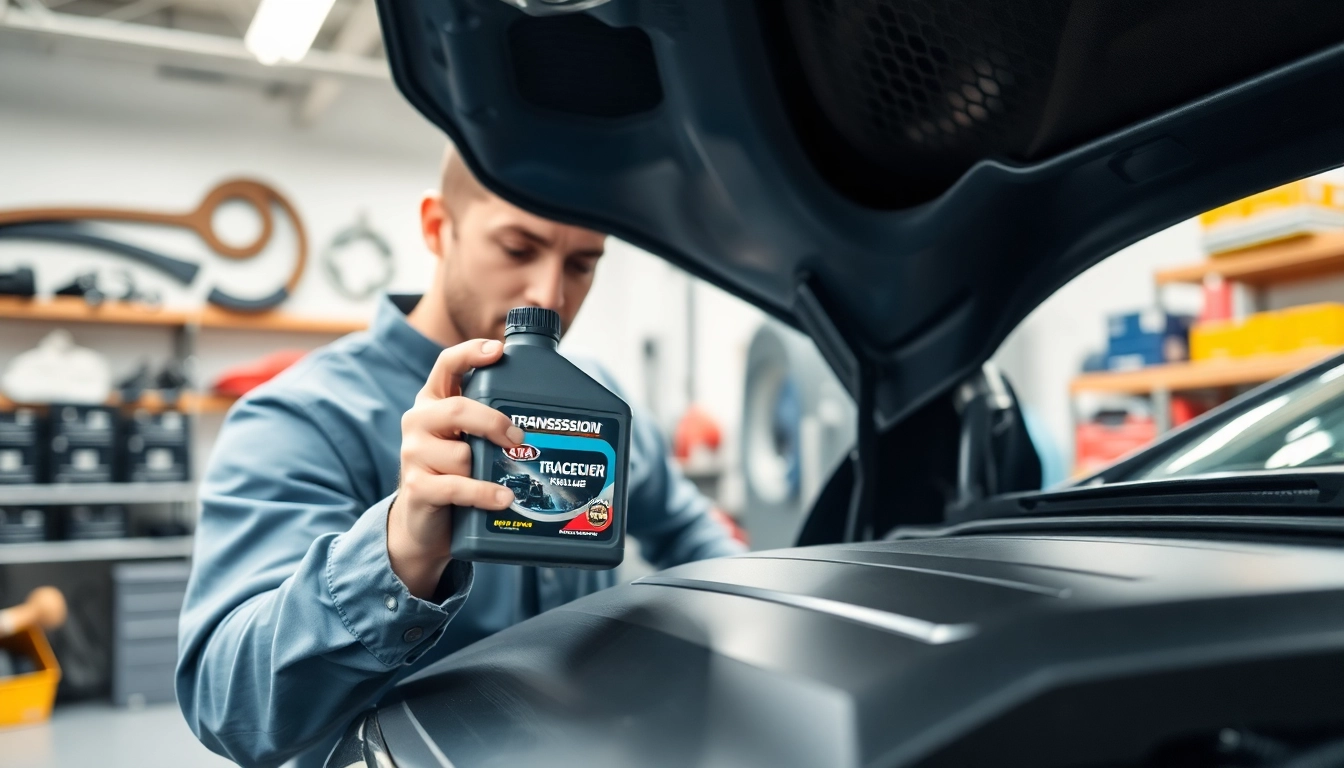Understanding Transmission Fluid: The Basics
What is Transmission Fluid?
Transmission fluid is a specialized lubricant used in automatic and manual transmission systems in vehicles. Its primary role is to facilitate smooth gear shifts, provide hydraulic pressure for automatic transmission operation, and keep the transmission cool by dissipating heat. Unlike engine oil, which primarily protects the engine, transmission fluid also plays a crucial role in the functioning of clutch plates and bands, ensuring the vehicle operates smoothly under various driving conditions.
Importance of Transmission Fluid for Kia Vehicles
For Kia vehicles, as with any modern automobile, transmission fluid is essential for several reasons. First, it prevents wear and tear on moving parts, extending the life of the transmission. Second, it enhances the overall performance of the vehicle by ensuring smooth and efficient power transfer from the engine to the wheels. Neglecting transmission fluid maintenance can lead to costly repairs and potentially catastrophic failures. Regularly checking and changing the fluid as per manufacturer guidelines helps maintain the vehicle’s performance and reliability.
Types of Transmission Fluid for Kia
Kia vehicles typically utilize several types of transmission fluids, which include:
- Automatic Transmission Fluid (ATF): This is the most common fluid type used in automatic transmissions, specifically formulated with additives to enhance performance and prevent foaming.
- Manual Transmission Fluid (MTF): Designed for manual transmission systems, MTF features a different viscosity and friction properties compared to ATF.
- CVT Fluid: Continuously Variable Transmission (CVT) units require a specialized fluid to accommodate their unique operating mechanisms, focusing on energy efficiency and fluidity.
Identifying the Right Transmission Fluid for Your Kia
Manufacturer Recommendations and Specifications
When it comes to selecting the right transmission fluid for your Kia, following manufacturer recommendations is critical. Each Kia model may require a specific type of fluid that meets certain performance standards. These specifications can typically be found in the owner’s manual or on the manufacturer’s website. Using the correct fluid ensures optimal vehicle performance and helps avoid voiding any warranty or service coverages. For example, Kia’s own branded ATF or fluids that meet specifications such as SP-II, SP-III, or SP-IV should be used where applicable.
How to Choose the Correct Transmission Fluid
Choosing the right transmission fluid involves several considerations: viscosity grade, fluid additives, and compatibility with your vehicle’s transmission system. Always refer to your owner’s manual to determine the correct viscosity grade, typically indicated in the format such as SAE 75W-90 for manual transmissions or specific ATF types for automatics. Additionally, look for fluids with additives that can combat oxidation, rust, and foam, which contribute to long-term transmission health.
Common Mistakes in Fluid Selection
Many vehicle owners make critical errors when choosing transmission fluid that can lead to significant issues. Common mistakes include:
- Using the wrong type of fluid: Each type of transmission fluid is engineered for specific transmission types. Using automatic fluid in a manual transmission or vice versa could cause severe damage.
- Neglecting to check specifications: Some fluids may claim to be compatible with a wide range of vehicles, but it is essential to ensure they meet Kia’s precise specifications.
- Overlooking fluid condition: Using old or degraded fluid can result in poor performance and damage. Always inspect fluid color and consistency before adding or replacing it.
Signs Your Kia Needs Transmission Fluid Change
Unusual Noises and Shifting Issues
If you’re experiencing strange noises when shifting gears, such as grinding or clunking, it may indicate low or degraded transmission fluid. Similarly, if your Kia struggles to shift into gear or hesitates during shifts, it’s a sign that the transmission fluid could be at fault, necessitating a change.
Fluid Color and Consistency Check
Healthy transmission fluid is typically a bright red color and has a slightly sweet odor. If the fluid appears dark brown or black and smells burnt, it is a clear indicator that it must be changed. Checking the fluid level and condition regularly can help you catch issues before they develop into serious problems.
Dashboard Warning Lights Related to Transmission
Many modern Kia models come equipped with dashboard warning systems. If the transmission warning light illuminates, this could signify various problems, including low fluid levels or other internal transmission failures. Ignoring these warnings can lead to severe damage and costly repairs. It’s advisable to consult a mechanic as soon as a warning light appears.
How to Change Transmission Fluid in Your Kia
Step-by-Step Guide to the Fluid Change Process
Changing your Kia’s transmission fluid can be a straightforward process, provided you have the right tools and follow these steps:
- Prepare Your Vehicle: Ensure the engine is off, the car is parked on a level surface, and the parking brake is engaged. Gather your tools: a socket set, funnel, new transmission fluid, and a fluid pan to catch the old fluid.
- Drain the Old Fluid: Locate the transmission fluid pan underneath your vehicle. Remove the drain plug and allow the old fluid to completely drain into the fluid pan. Reattach the drain plug securely once drained.
- Replace the Filter (if applicable): Some Kia models require you to replace the transmission filter during a fluid change. Follow your manual for specific instructions.
- Add New Fluid: Using a funnel, carefully pour the new transmission fluid into the dipstick tube or designated filling port, following the manufacturer’s recommended fluid amount.
- Check Fluid Levels: Start the vehicle and let it run for a few minutes. Check the fluid level using the dipstick, and add more fluid if necessary to reach the correct level.
Essential Tools and Safety Tips
Safety is paramount when performing maintenance on your vehicle. Here are a few essential tools and safety recommendations:
- Tools: Basic hand tools like socket wrenches, a funnel, and a fluid catch pan are essential. Having a transmission filter kit, if applicable, can also be beneficial.
- Safety Tips: Always wear safety goggles and gloves to protect against spills and debris. If you need to jack up the vehicle, ensure it is secure and stable before crawling underneath.
When to Seek Professional Help
While changing transmission fluid can be a DIY task, there are instances where professional help is advisable. If you’re uncomfortable with the process, lack the necessary tools, or encounter any issues that require specialized knowledge, hiring a mechanic ensures proper service. Additionally, if you notice any persistent problems with shifting or noise after a fluid change, a professional diagnostic is recommended.
Maintaining Your Kia’s Transmission Health
Regular Maintenance Schedule for Transmission Fluid
Establishing a regular maintenance schedule is crucial for the longevity of your Kia’s transmission. It’s generally recommended to change automatic transmission fluid every 30,000 to 60,000 miles, while manual transmissions may require changes every 15,000 to 30,000 miles. However, specific recommendations can be found in the vehicle owner’s manual.
Best Practices for Long-Term Transmission Care
Caring for your Kia’s transmission involves more than just changing the fluid regularly. Here are some best practices:
- Avoid Overloading the Vehicle: Excessive weight can put additional strain on the transmission. Stick to the manufacturer’s recommended load limits.
- Monitor Driving Habits: Aggressive driving can lead to increased wear and tear on the transmission. Opt for smoother acceleration and deceleration whenever possible.
- Address Issues Promptly: If you notice any signs of trouble, such as slipping gears or unusual noises, have them checked out immediately to prevent further damage.
Consequences of Neglecting Transmission Maintenance
Neglecting transmission maintenance can lead to dire consequences, including:
- Transmission Failure: The most severe consequence can be total transmission failure, which often requires complete replacement.
- Reduced Vehicle Performance: Poor fluid condition can hinder your car’s performance, leading to sluggish acceleration and inefficient power transfer.
- Increased Repair Costs: Ignoring necessary fluid changes can lead to more extensive and expensive repairs down the line, increasing your overall ownership costs.
Maintaining the transmission fluid in your Kia is vital for ensuring longevity, efficiency, and overall vehicle performance. By understanding how to identify when a change is necessary, recognizing the right products to use, and adhering to maintenance schedules, you can keep your Kia in top shape for years to come. Investing the time and effort into proper transmission care will pay off in terms of reliability, safety, and satisfaction on the road. For more information on related topics, consider exploring further insights like transmission fluid kia.



